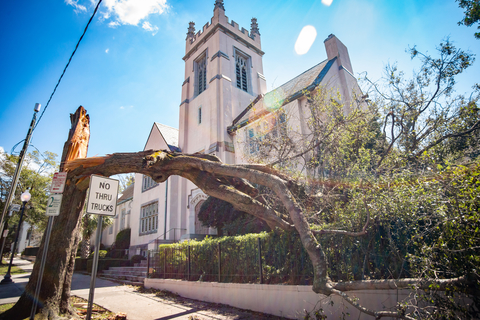What happened this week?
Among the Ruins of Mexico Beach Stands One House, Built 'for the Big One'. MEXICO BEACH, Fla. — Florida’s building code, put into effect in 2002, is famously stringent when it comes to windstorm resistance for homes built along the hurricane-prone Atlantic shoreline. But it is less so for structures along the Panhandle, a region historically unaffected by storms as strong as the ones that have slammed into South Florida. Read More
As Hurricane Michael damages the Southeast, Puerto Rico provides lessons on resilient power. A year of power outages in Puerto Rico produced a historic case study in human misery, with almost 3,000 deaths due in part to the lack of power for home health care equipment and refrigeration of medications, and from outages in hospitals and clinics.
Recently, however, Puerto Rico has taken steps to avoid future such catastrophes. Read more
Interesting Facts
What will winter in the US look like? The National Oceanic and Atmospheric Administration (NOAA) predicted that overall temperatures will be warmer than normal over much of the US, especially the pacific northwest. In relation to precipitation, NOAA predicted that it will be wetter than normal across much of the south, and dryer than normal in portions of the mid-west and Northern Rockies. In addition, there is a 75% chance that El Niño will develop in the next several months. Watch Video
Policy Developments and Outlook
What will winter in the US look like? The National Oceanic and Atmospheric Administration (NOAA) predicted that overall temperatures will be warmer than normal over much of the US, especially the pacific northwest. In relation to precipitation, NOAA predicted that it will be wetter than normal across much of the south, and dryer than normal in portions of the mid-west and Northern Rockies. In addition, there is a 75% chance that El Niño will develop in the next several months. Watch Video
Policy Developments and Outlook
Disaster Recovery: School Infrastructure Resilience Roadmap & Best Practices. School districts that face the loss of a school in a natural disaster like a hurricane face myriad challenges after the immediate danger passes, ranging from education and public safety to reconstruction. To improve community resilience, replacement schools can be designed to mitigate disaster risk and increase school infrastructure resilience in affected areas following a disaster. Read More
900K San Diegans participated in earthquake drill. SAN DIEGO - More than 900,000 San Diego County residents participated in Thursday's Great California ShakeOut earthquake drill to test their level of preparedness for a major temblor. The 10th annual drill took place at 10:18 a.m. At that time, millions of people across California will "drop" to the ground, take "cover" under a desk, table or other sturdy surface and "hold on" for 60 seconds, as if a major earthquake were occurring. Read More





